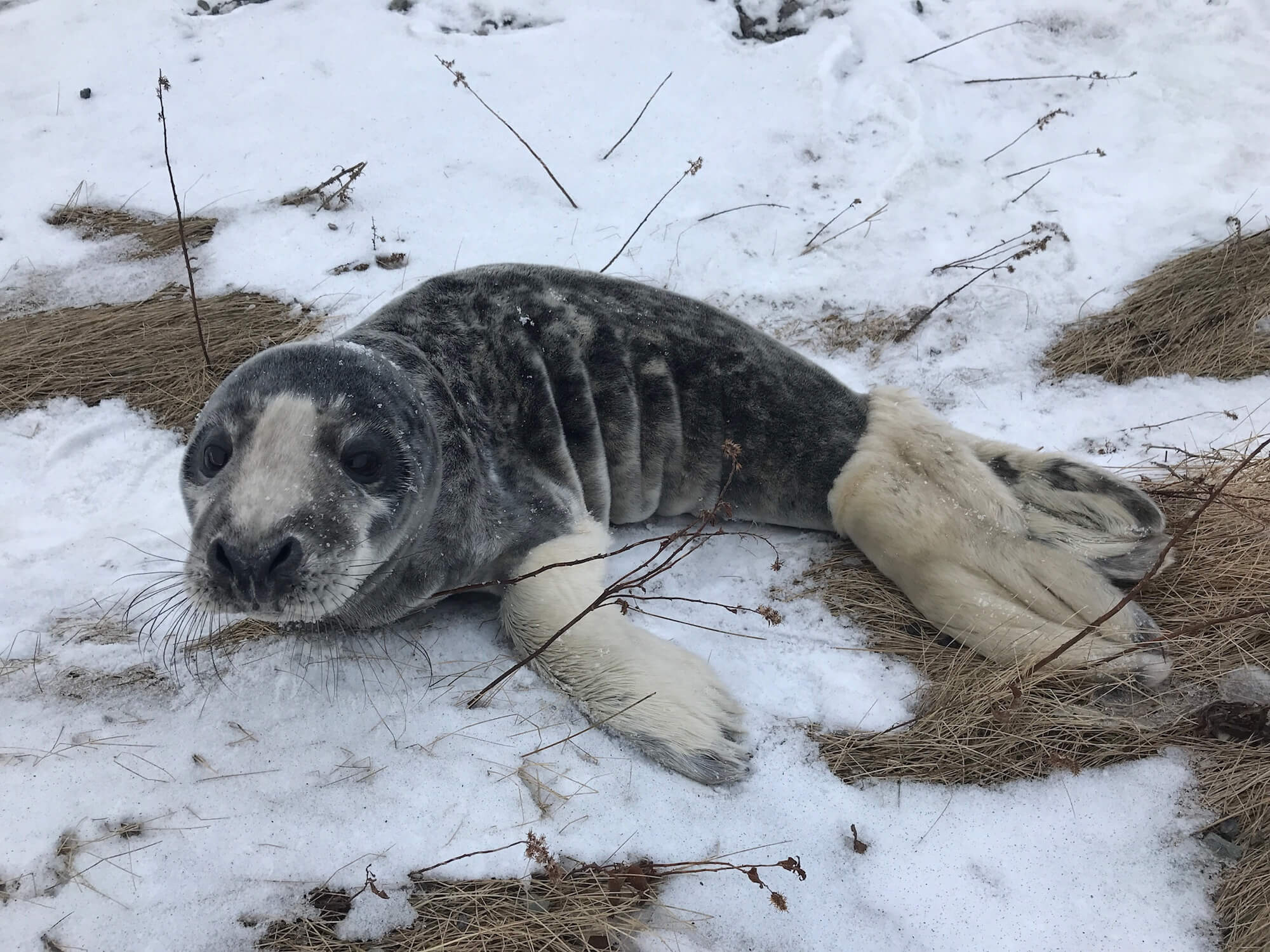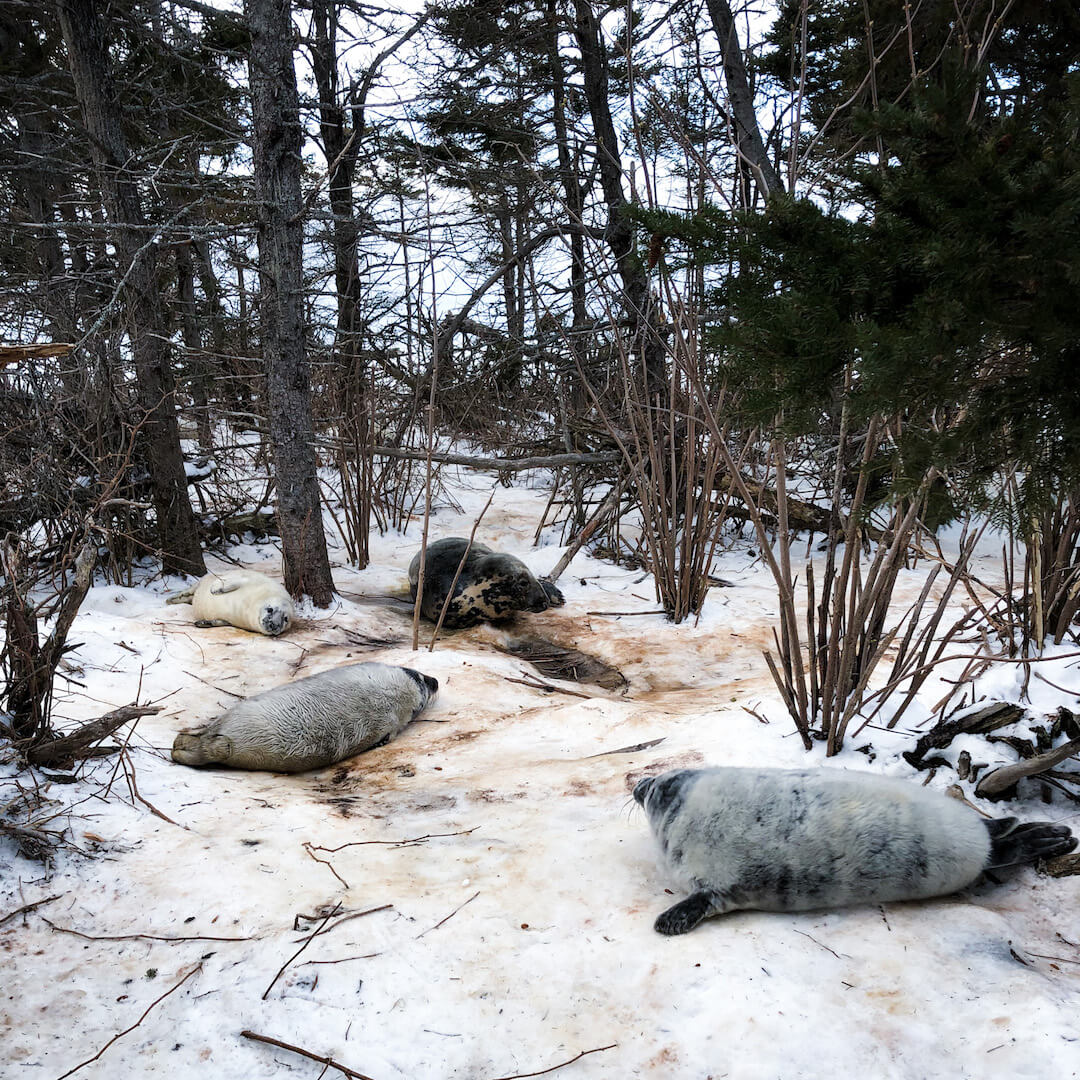When a young grey seal is found nearly a kilometre inland in the Magdalen Islands, what’s the best course of action? This is the question that the Quebec Marine Mammal Emergency Response Network was faced with. A grey seal about 17 to 25 days old had to be moved on two occasions before it finally took to the sea. Recap of the events and the issues raised by relocating the seal…
Curious seal
On January 22, a local resident is surprised to discover a young, moulting grey seal behind her home in a residential area near Gros-Cap in the Magdalen Islands. When fishery officers are notified of the situation, they capture the seal and release it in a quiet spot near the Borgot lighthouse. Only trained and licensed professionals are authorized to move seals.
The following morning, another resident also discovers a young seal on the shoulder of one of the island’s main roads, about a kilometre from the coast! A volunteer is dispatched to the site to properly assess the situation. Her photos confirm that it’s the same pup!
Should it be moved again? The Network team consults with wildlife veterinarian Stéphane Lair. To assess the relocation of a wild animal – an intrusive and stressful intervention – various aspects must be considered. One of the first parameters to consider is the level of risk of the situation in which the animal finds itself. In this case, a young seal near a busy thoroughfare poses a high risk not only to the animal, but also to drivers who could cause an accident by trying to avoid the seal on the road, for example. An animal that is relocated will not always go where responders want it to go, as exemplified by the first attempt to move this grey seal. Is it worth handling a second time then? “If the animal is in good enough condition to be relocated and it is in danger where it is, the next step is to analyze the best place or places to release it. For example, is the weather at sea good, are other animals of its species nearby, will the seal be calm at the site of release, etc.,” explains Anthony François, mobile team lead for the Quebec Marine Mammal Emergency Response Network.
Fishery officers therefore moved the seal again, this time to a beach with little human traffic. It quickly returned to the sea, swimming with vigour. It has not been seen again since.
Situations involving seals far from shore or in dangerous places often concern juveniles. Is it a lack of experience that leads them to these most unusual places? Perhaps. It is quite normal for a seal to be out of water, but it can be at risk depending on where it is or if it is injured. If in doubt, you can contact the emergency line of the Quebec Marine Mammal Emergency Response Network at 1-877-722-5346.
The challenge of being born on the ice
In the Gulf of St. Lawrence, the proportion of seal pups born on pack ice declined from 100% in 2004 to 1% in 2016, due to the reduction in winter ice cover. Instead, seals are now giving birth on islands, including Île Brion and Île du Corps-Mort in the Magdalen Island archipelago. It is therefore possible that this seal pup, measuring less than one metre long, was born in the area. Pupping season take place between mid-December and early February.
In grey seals, nursing lasts 16 or 17 days, so it is quite possible that this individual had not yet been or had only recently been weaned. Its moulting pattern suggests that it had not yet been weaned, according to Jean-François Gosselin. Indeed, in “ragged-jackets” – the name given to grey seals undergoing their first moult – moulting begins with the legs and tail. However, the legs and tail of this seal were still covered in lanugo, i.e. the animal’s original white coat, while the rest of its body had begun to moult.
For seals, the first year of life is not easy. According to the results of a stock assessment of grey seals in Canada’s Northwest Atlantic, two out of every three grey seals probably don’t live to be one year old.






